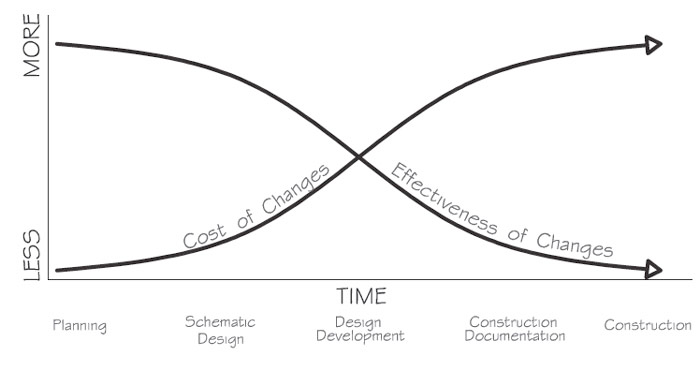Almost all building projects go through a similar design process.
Initially, design ideas are tested and developed, and as design continues in a series of phases, more and more detail is added. The phases of work divide the work into manageable chunks; at the end of each phase, client approval is required before moving forward. The five typical phases are:
- Predesign (almost never abbreviated to PD, in contrast with the other phases)
- Schematic Design (SD)
- Design Development (DD)
- Construction Documents (CDs)
- Construction Administration (CA)
 Depending on the scale of the renovation project, Predesign is often skipped altogether, and sometimes SD is combined with DD as the required changes are sorted out. A ‘full’ set of Construction Documents is often required for renovations that will be bid by contractors, or that require significant space alterations.
Depending on the scale of the renovation project, Predesign is often skipped altogether, and sometimes SD is combined with DD as the required changes are sorted out. A ‘full’ set of Construction Documents is often required for renovations that will be bid by contractors, or that require significant space alterations.
Construction documents for minor renovations may consist of some drawings and notes from a designer.
Big decisions happen early
In the beginning, it is easy and inexpensive to make significant design changes in order to arrive at the right solution. With each phase of design, more detail is added, so as the phases go on, it becomes more difficult and costly to make changes.
Because most arts and cultural facilities are very complex projects for which the clients have specialized needs, it’s important to stay involved and aware throughout the design process.
(http://www.fs.fed.us/t-d/pubs/htmlpubs/htm09732802/longdesc/fig05ld.htm )
This post is also available in: French





